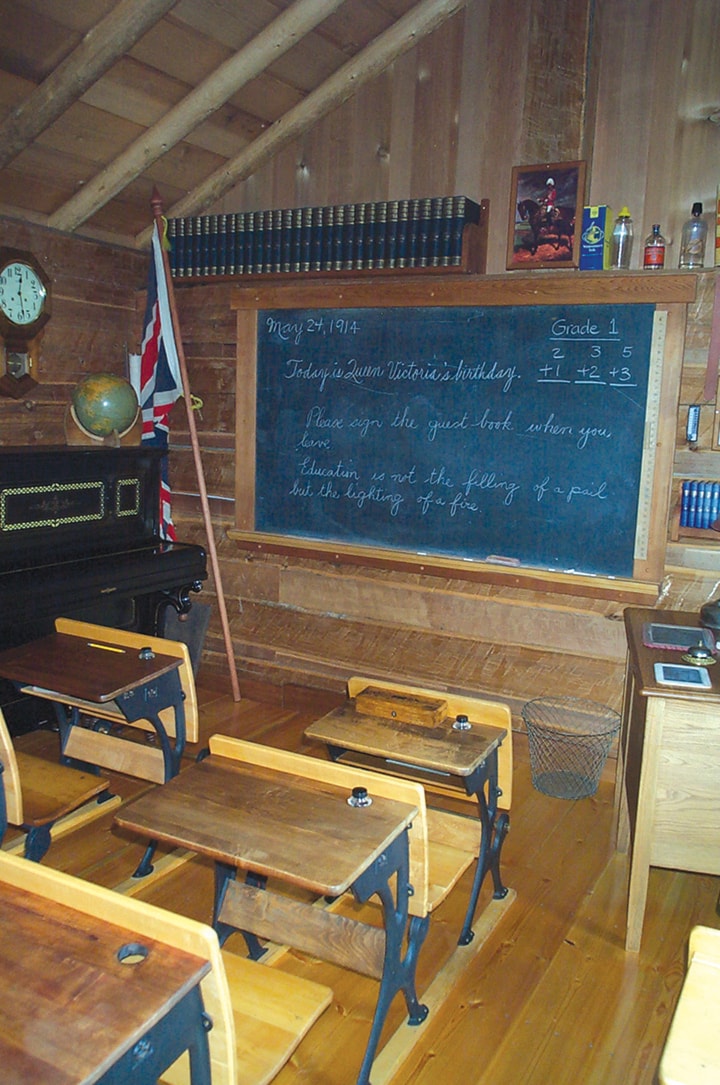Park Siding, on the Nelson and Fort Sheppard Railway, a few kilometers northeast of Fruitvale, was named for nearby landowner Andrew Park.
According to How Did Your Street Get Its Name? Place Names of the Beaver & Pend d’Oreille Valleys, “Mr. Park panned for gold in Wildhorse Creek near Ymir and in the Big Bend country. Later, he settled at Park Siding, having bought land directly from the Nelson and Fort Sheppard Railroad. His land was later left to his niece, who was from the US. Mr. Park’s niece, however, did not think the land worth paying taxes on, and eventually it was sold at a tax sale.”
Park isn’t mentioned in many other sources, although the 1898 BC voters listed him as a Revelstoke miner and the Kootenay Mail of Sept. 12, 1896 said “Andy Park” was working on a trail in that area.
In 1912, John Potter Bell built the first Park Siding school, and it operated until a second, larger school opened a decade later. The first school is still standing, although not on its original site. It was moved in 1989, restored, and designated a historical site, which you can visit mid-May through mid-September.
Although it apparently opened a bit earlier, the school wasn’t mentioned in the department of education’s annual report until 1914-15, where it was called Parks Siding — it was also sometimes referred to as Park’s Siding.
Park Siding first shows up in the BC civic directory in 1919, with rancher and telegraph agent R.P. Bell listed as the lone resident.
Park Siding was also the original name of Slocan Park, which we’ll get to later in this series.
PASS CREEK
The earliest mention of Pass Creek, the body of water near Castlegar, is in George Dawson’s Report on a Portion of the West Kootanie [sic] District, British Columbia (1889): “It is evident that the country in that direction must, at no great distance from the lake, drain toward the Slocan or to Pass Creek.”
Another early mention can be found in the Nelson Miner of Aug. 9, 1890: “If prompt action had not been taken, H. Abbott would now control all the water in Cottonwood Smith creek, as he does all water in Pass creek at Sproat.” (We’ll get to Sproat’s Landing later in this series.)
Author Walter Volovsek comments in Trails in Time: Reflections: “Pass Creek valley is a charming place … The creek’s hidden charms drew the earliest native explorers along its course and led to the discovery of the low pass between it and Goose Creek. This is the easy doorway to the Slocan and via this river and the Kootenay River to Kootenay Lake. It became a native pathway long before the coming of the white man; hence its name.”
Subsequently, Pass Creek was the name applied to the entire valley between Raspberry and Krestova — curiously, no other place names are widely used along this route today, although for a long time Gibson Creek was in common parlance, as a school operated there until 1966.
According to Jon Kalmakoff’s Doukhobor Gazetteer, the Doukhobor settlements at Pass Creek were known as Lugovoye (meaning meadow in Russian) and Kartoshnoye (meaning potato). Because many residents were of Mordivian ancestry, the area was also called Mordovskoye. Individual villages were nicknamed London (because it was large) and Hollywood (because many beautiful girls lived there).
Pass Creek is also known as Norns Creek — the Norns were the Fates in Scandinavian mythology.
This is actually the creek’s official name, adopted by the BC Geographical Names office on Dec. 6, 1951. A note on the office’s website says: “A February 1997 suggestion to change the name back to Pass Creek, to reflect the historic name, did not receive any apparent support from residents or regional district representatives.” However, Pass Creek remains on the books as a “locality.”
A second Pass Creek flows into the Granby River south of Lynch creek.
